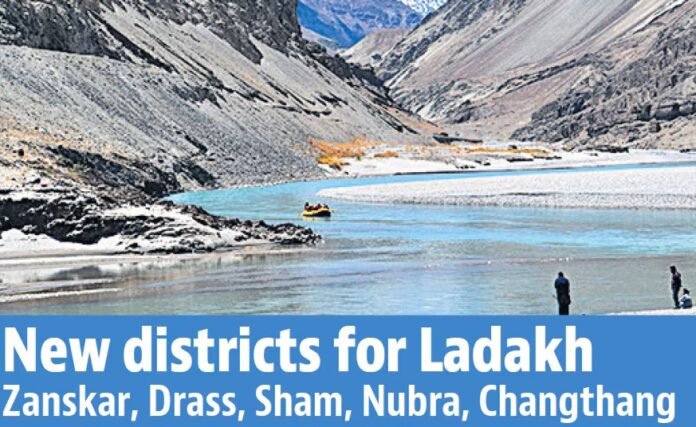
In a significant development aimed at enhancing governance and accelerating development in Ladakh, Union Home Minister Amit Shah announced the creation of five new districts in the Union Territory on Monday. This move will increase the total number of districts in Ladakh from two to seven, marking a crucial step in the region’s administrative restructuring.
The five new districts—Zanskar, Drass, Sham, Nubra, and Changthang—are intended to improve governance and bring public services closer to the people. Prime Minister Narendra Modi described the decision as “a step towards better governance and prosperity” for the people of Ladakh.
A Vision for a Prosperous Ladakh
The creation of the new districts aligns with Prime Minister Modi’s vision of building a developed and prosperous Ladakh. In a post on X (formerly Twitter), Amit Shah emphasized that the new districts would ensure that the benefits of government schemes reach every corner of the Union Territory. “The Modi government is committed to creating abundant opportunities for the people of Ladakh,” Shah stated.
Congratulating the people of Ladakh, Prime Minister Modi reiterated the importance of this decision, saying it would bring services and opportunities closer to the residents of these newly formed districts. He highlighted that Zanskar, Drass, Sham, Nubra, and Changthang would now receive more focused attention from the government.
Addressing Governance Challenges
The decision to carve out new districts was driven by the unique challenges faced by Ladakh due to its vast geographical area and sparse population. Currently, the region has only two districts—Leh and Kargil. The challenging terrain and remote locations have made it difficult for district administrations to reach grassroots levels effectively.
The Ministry of Home Affairs (MHA) explained that the formation of new districts would enable the effective implementation of public welfare schemes, ensuring that more people can benefit from government initiatives. The MHA believes this move will be pivotal in Ladakh’s all-round development.
The Path Ahead
In addition to the “in-principle approval” for the new districts, the Home Ministry has instructed the Ladakh administration to establish a committee to evaluate key aspects such as headquarters, boundaries, administrative structure, and staffing requirements. The committee is expected to submit its report within three months, after which a final proposal will be sent to the ministry for further action.
The announcement has sparked discussions about the future governance structure in these new districts. The Congress party, through its General Secretary Jairam Ramesh, raised questions about whether elected Autonomous Hill Development Councils (AHDCs) will be established for each of the new districts. Currently, AHDCs exist for Leh and Kargil, established in 1995 and 2003, respectively.
Ladakh’s Strategic and Geopolitical Importance
Ladakh, a region of immense geopolitical and strategic significance, serves as a buffer zone between India and its neighbors, China and Pakistan. Since the 2020 Galwan clashes, where 20 Indian soldiers lost their lives, the Indian Army has maintained a strong presence in the area. The decision to create new districts could further bolster the administrative and defense framework in this critical region.
As Ladakh continues to navigate its unique challenges and opportunities, the creation of these new districts is expected to play a crucial role in shaping the future of this Union Territory. The Modi government’s commitment to Ladakh’s development is clear, and this move is seen as a significant step towards ensuring prosperity and better governance for its people.

